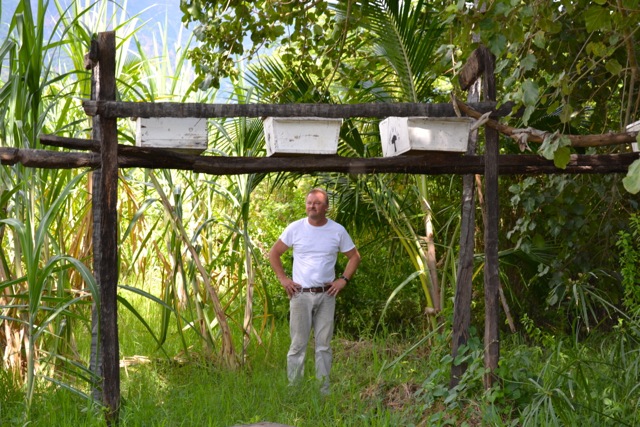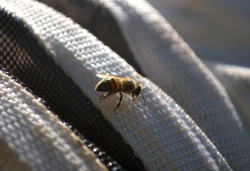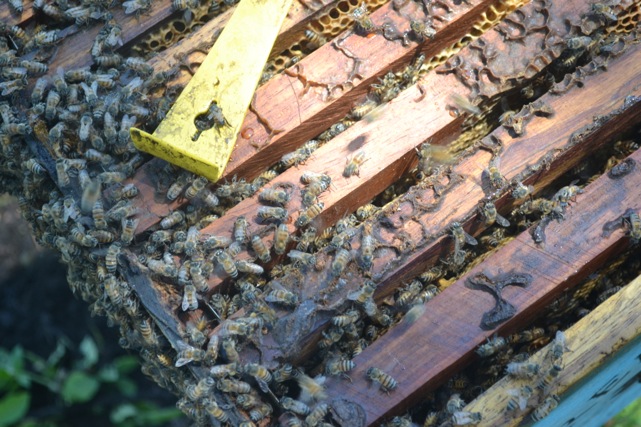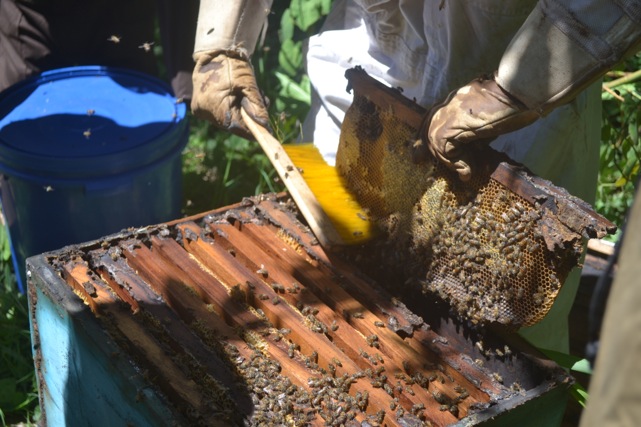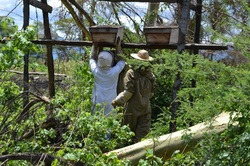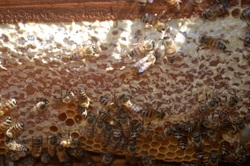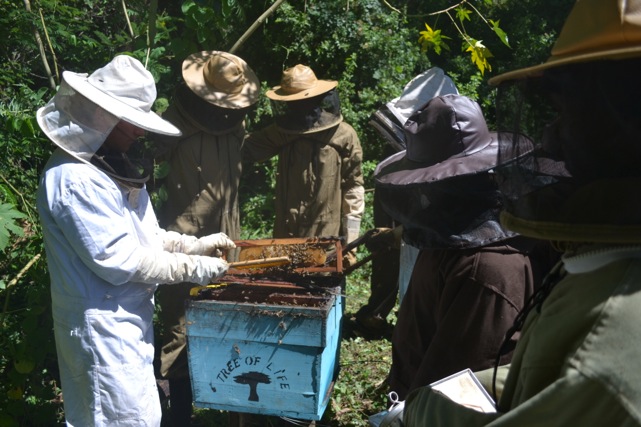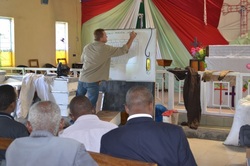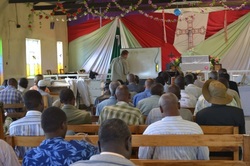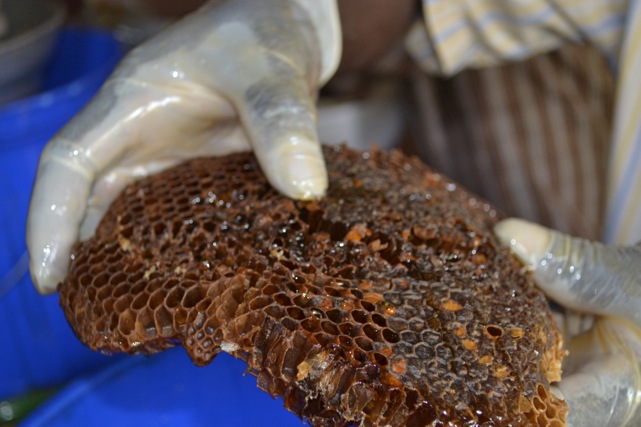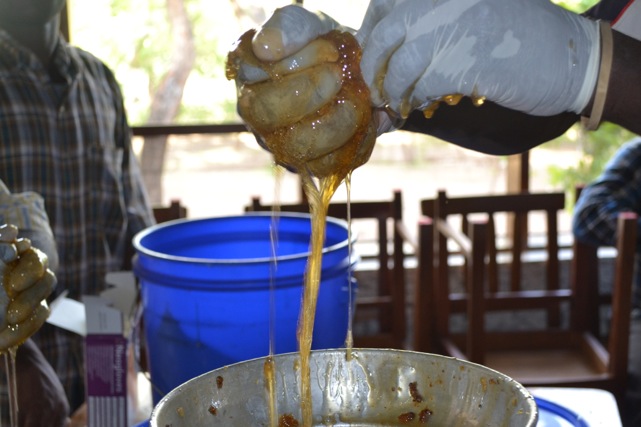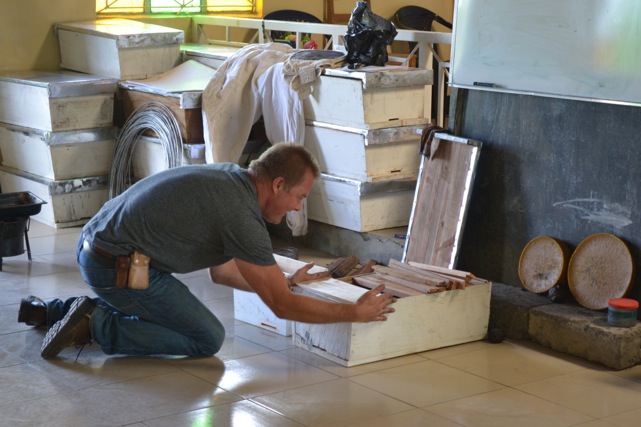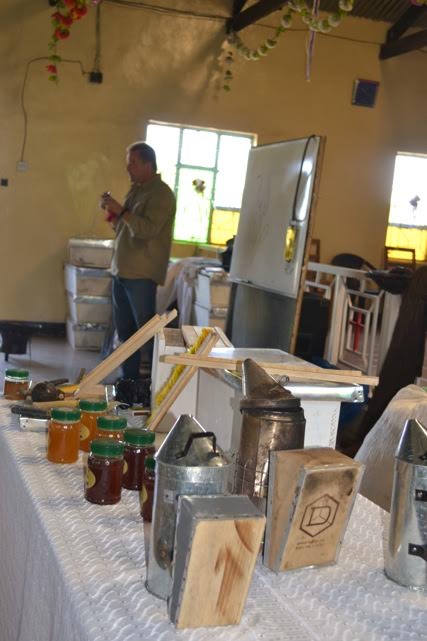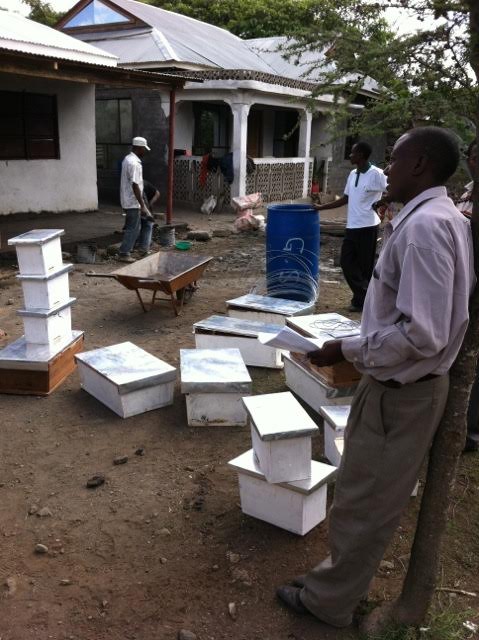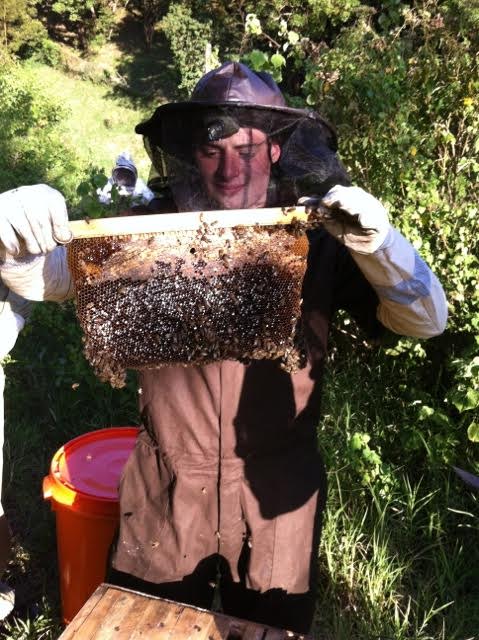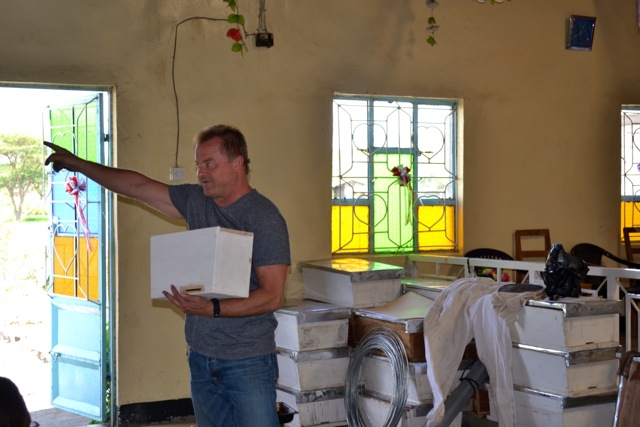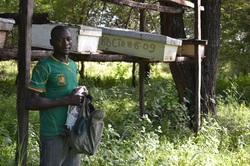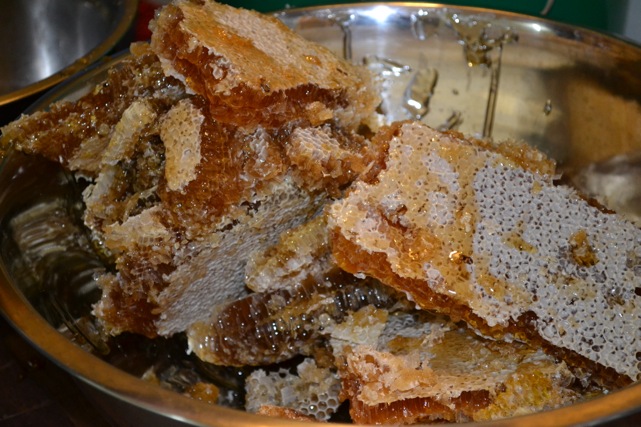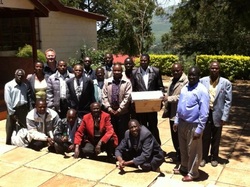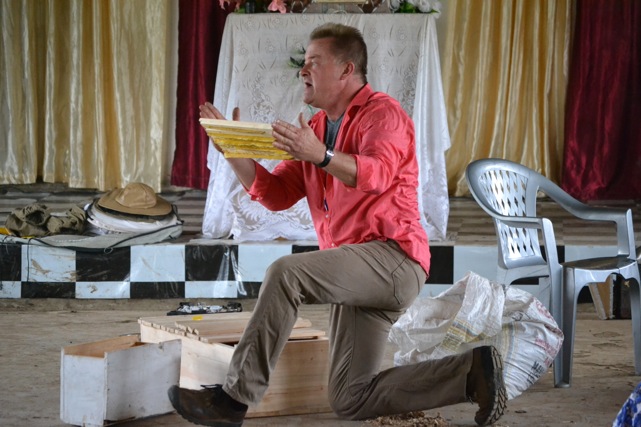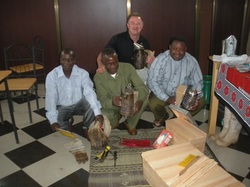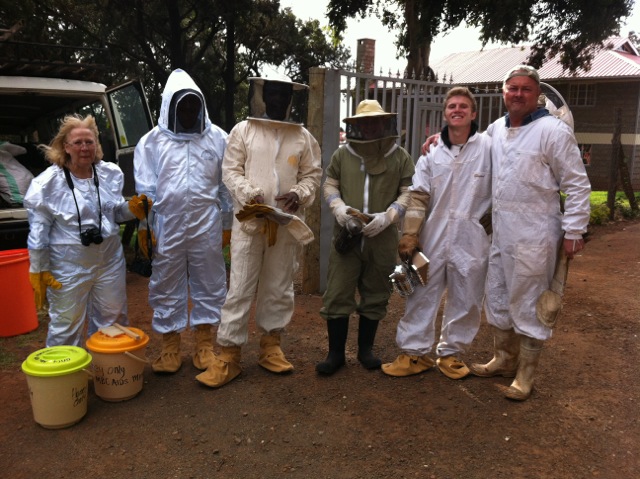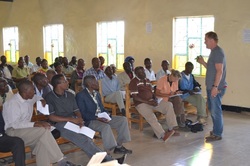|
Pulling a comb from this top bar hive. Notice the large chunk of propolis on the right side of the bar. This propolis is a substance gathered by bees from flower buds and certain saps to be used to help waterproof as well as encapsulate offending insects like large hive beetles and on occasions even mice that become trapped or killed inside the colony.
|
Defoliation plus slash and burn farming is taking its toll on prime bee habitat in many areas of Africa. The hives we had in this lovely forest had to be moved due to encroaching farmers cutting the forest for planting corn. During our training session we obstructed the entryways on the hives and moved them to a new locality.
|
"Close up" of African bees on honey comb from a shallow super. They have been smoked and it causes them to "drink honey" from the open comb. This ripening honey fills the bees stomachs and causes them to become less aggressive, even lethargic, making harvesting easier.
|
|
During the "processing and packaging” day of the training beekeepers learn how to clean comb and crush it to extract honey. Clean, raw, well packaged honey should be the goal of all beekeepers. Raw honey contains volatile key tones that add to its fragrance, color and taste. These volatile key tones are destroyed when honey reaches a high temperature. Honey should NEVER be boiled.
|
Crushing comb while wearing latex gloves produces a good market ready product. Take care to wash your hands with soap up to the elbows before donning the gloves. A box of latex gloves goes a long way and is readily available at all African pharmacies.
|
Transfer of the 5 bars of a catcher box to an actual hive. The procedure is quite simple and ensures that all hives in an apiary will become active and viable for the beekeeper who is seeking to generate income from his/her hives.
|
|
Training session for World Vision in Ngarananyuki, Arusha.
|
Some of the hives and catcher boxes made by Tree of Life for World Vision and distributed to the beekeepers in Arusha region.
|
Ted was involved in training young men at Rift Valley Academy in Kijabe, Kenya. This young man Ethan took a keen interest in caring for bees and looks forward to incorporating beekeeping in his future!
|
|
Explaining the purpose of using a "catcher box" to obtain 100 percent occupation of hives in an apiary.
|
James, takes care of all our Rukwa apiaries and ensures that they are strong for the training that takes place there.
|
Honey combs cleaned and ready for crushing to extract honey. After the honey is extracted this virgin comb will be melted down to bait new hives for fresh occupations.
|
|
Kenya Moffat College training program for Care of Creation pastors and church leaders. This training was aimed at helping "jump start" beekeeping programs in local churches for the ecological impact it would provide for the community, production of honey and increased pollination of crops.
|
Showing the transfer of the 5 bars from a "catcher box" to a full sized hive in Kenya’s Olepoulous village in Masailand. When done in the field these 5 top bars will carry the new colony that has occupied it, which will then adopt the new "full size" hive as it’s home.
|
Olepoulous village, Kenya. The width of the top bars are the most important measurements in the hive. The width should always be 32mm.
|
